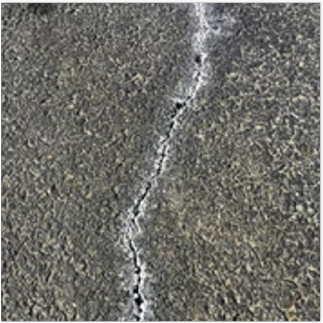
Groundwater
Groundwater build-up can be identified by the white, chalk-like markings coming through the cracks in your parking lot or driveway. Groundwater is caused by hydrostatic pressure.
Armor Solution: Sealcoating and cracksealing alone may not alleviate groundwater. One of the most effective ways to address groundwater is to install drain tile under your asphalt parking lot or driveway (or concrete sidewalk) to capture and release underground water.
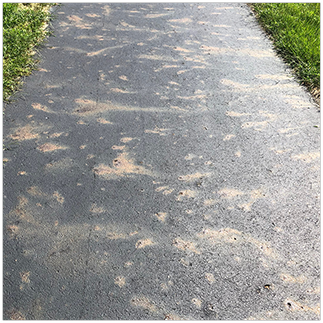
Rust Stains (Pyrite)
Pyrite is a common mineral present in sedimentary rocks, including those used to create asphalt. Pyrite can produce rust stains. While these rust stains do not compromise the integrity of your pavement, they are often visible and a common source of complaints.
Armor Solution: Unfortunately, even a sealcoating application will not prevent the rust stains from coming through over time. Rust stains may be eliminated by removing and replacing the asphalt.
Concrete Cracking
Cracking of pavement can be caused by temperature cycles, expansion/contraction (ground movement), and poor joint construction. Cracking is inevitable in regions that experience full season changes.
Armor Solution:
To prevent or delay the occurrence of cracking, it is strongly recommended that a sealcoat be applied to new asphalt approximately 1 year after installation and then evaluated annually. Sealing the asphalt will reduce oxidation of the surface caused by weather and wear & tear. This reduced oxidation will keep the asphalt pliable, which will allow for slight ground movement without causing excessive cracking.
In addition to parking lot sealant, larger cracks must be maintained with crack sealant annually. Hot rubberized crack sealant is designed to help prevent against moisture getting underneath the surface – preventing erosion of the base and protection from seasonal ground movement. While crack sealant is not a permanent fix, applying it annually can extend the life of your parking lot without more costly fixes.
Separation is different from cracking. Once a crack has separated far enough where crack sealant is not effective, the only solution is to mill out the cracked section and replace with new asphalt.
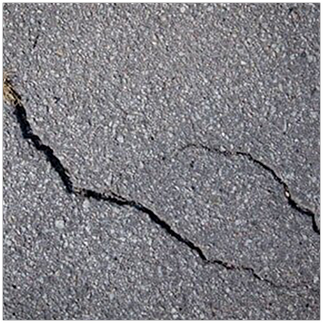
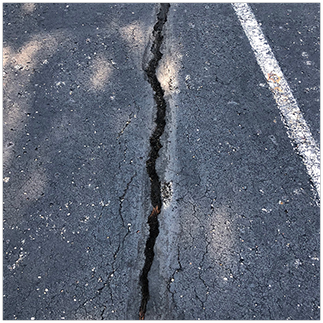
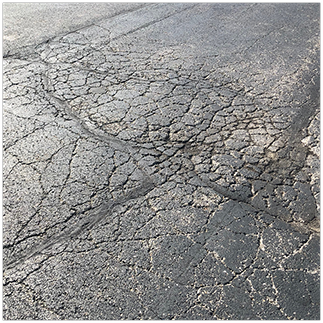
Shattered or Fractured Areas
Shattered areas, also known as alligatored or spider-webbed areas, often indicate base failure underneath the pavement.
Armor Solution: Shattered areas differ from individual cracks and cannot typically be fixed with hot rubberized crack sealant. This can be addressed by cutting out the shattered area, correcting the base failure, and replacing the section with new asphalt.
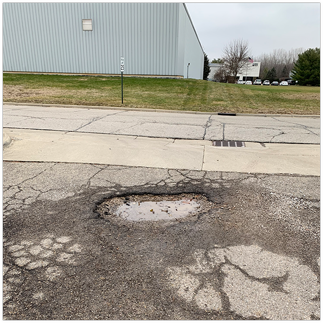
Potholes
Potholes can occur when water enters the pavement and expands and contracts during freeze/thaw cycles, causing the pavement to deteriorate. This natural occurrence ultimately weakens the material causing holes to form. Not all pavement will deteriorate at the same rate.
Armor Solution:
There are several options for repairing potholes including filling the hole with asphalt or cutting the asphalt out and replacing it with new asphalt. Armor’s specialized repair and patch crew provides an economical solution to repair your pavement. Areas in need of repair will be milled or cutout, then filled with hot asphalt and compacted. Armor works year-round to address any and all pothole repairs.
